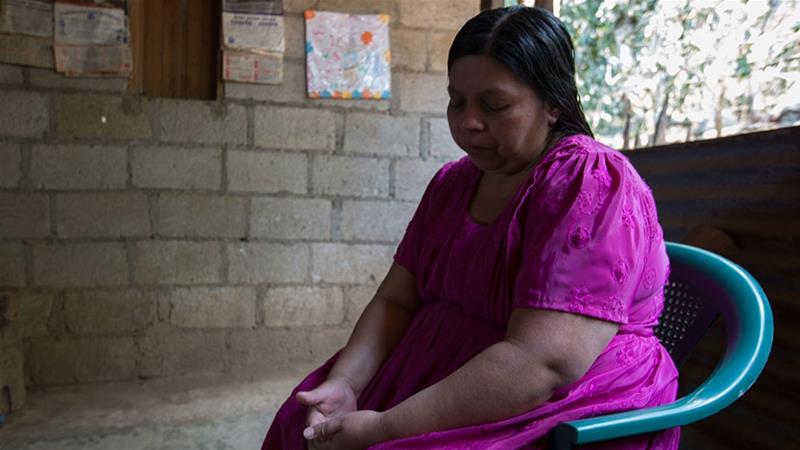'I lost my son': Guatemala mum mourns boy who died in US custody
Sixteen-year-old Juan de Leon Gutierrez travelled to the US to join his older brother and send money home to his family.
Tizamarte, Guatemala – Transito Gutierrez did not want her 16-year-old son, Juan de Leon Gutierrez, to migrate to the United States from their small town in southern Guatemala, near the border with Honduras. But Juan assured her he would make it.
“He told me, ‘Mommy, I am going to cross over the border and I will send you money. It may not be every day, but I will when I can.'” Gutierrez, 46, told Al Jazeera.
Juan was one of Gutierrez’s six children. He was hoping to join his older brother who migrated to the US in 2011.
The teen left the small village of Tizamarte in the arid, rain-starved mountains over the town of Camotan, Chiquimula on April 4 with a friend from a nearby village. They travelled with a migrant guide, commonly known as a coyote.
He was detained by US authorities as he tried to cross the US-Mexico border a little over two weeks later. He was eventually sent to a migrant youth shelter, and on April 30 he died following surgery to relieve pressure in his head caused by an infection, according to local media.
Juan is the third minor from Guatemala to die in US custody along the southern border since the beginning of December. His death has left the family devastated.
“I’ve lost my son, but his soul is still with us,” Gutierrez said, as she held back tears.
The family is waiting for the return of Juan’s body to Guatemala. This is especially important for his mother, who laments that she does not have a photo of her son.
‘He was healthy’
Juan was detained on April 19 as he attempted to cross into the US near El Paso, Texas by US Customs and Border Protection. According to US media, he was transferred a day later to Southwest Key Casa Padre, an Office of Refugee Resettlement facility in Brownsville, Texas built in an old shopping centre.
In an emailed statement to Al Jazeera, Evelyn Stauffer, spokesperson for the Administration for Children and Families of the US Department of Health and Human Services said “no health concerns were observed” prior to the teen being transferred.
On April 21, Juan woke up with chills, a fever, and a headache. According to Stauffer, he was taken to the hospital, where he was treated and released. His condition did not improve.
On April 22, he was taken to the emergency room and placed in intensive care. He died eight days later. The exact cause of death is currently under review, Stauffer said.
According to Gutierrez, Juan’s pain began to develop while he was en route to the US border, but he was taking medicine to limit the pain.
“When it use to rain here, he would go work in the field and return saying that his head hurt,” Gutierrez said. “But he was healthy.”
While Juan was sick, his mother was informed of developments in his condition by US officials. At times they came in Spanish, other times they came in English, which she didn’t understand.
Juan’s older brother, who was already in the US, also kept his mother informed of the teen’s condition, Gutierrez said.
At one point, officials from the Guatemalan Ministry of Foreign Affairs called to ask her if she would be interested in travelling to the US, but this only brought her more concern.
“I don’t have the money to travel or to pay for a passport,” she said.
Poverty and climate change
Juan was one of many migrating from the southern regions of Guatemala, an area known as the dry corridor.
The situation has grown worse in the last two years. According to Gloria Amador, a 41-year-old nurse who has worked in the village of Tizamarte and the surrounding region for nine years, people began to migrate to the US in July 2018.
“Many people are migrating due to necessity,” Amador told Al Jazeera. “There is little work, there are families with few resources, and there is a severe drought.”
The drought has heavily affected the region, Amador said, adding that farmers in the area lost 80 to 90 percent of their crops last year due to drought.
The dwinding capacity to work the land also drove Juan to seek opportunities in the US.
“Now that it doesn’t rain, we cannot produce anything,” Gutierrez said.
“[Juan] told me that the coffee plants were dying. He said he was desperate,” she added. “He said he could earn more there in the United States than here. He could earn more than the $4 a day working in the field.”
Source: Read Full Article





